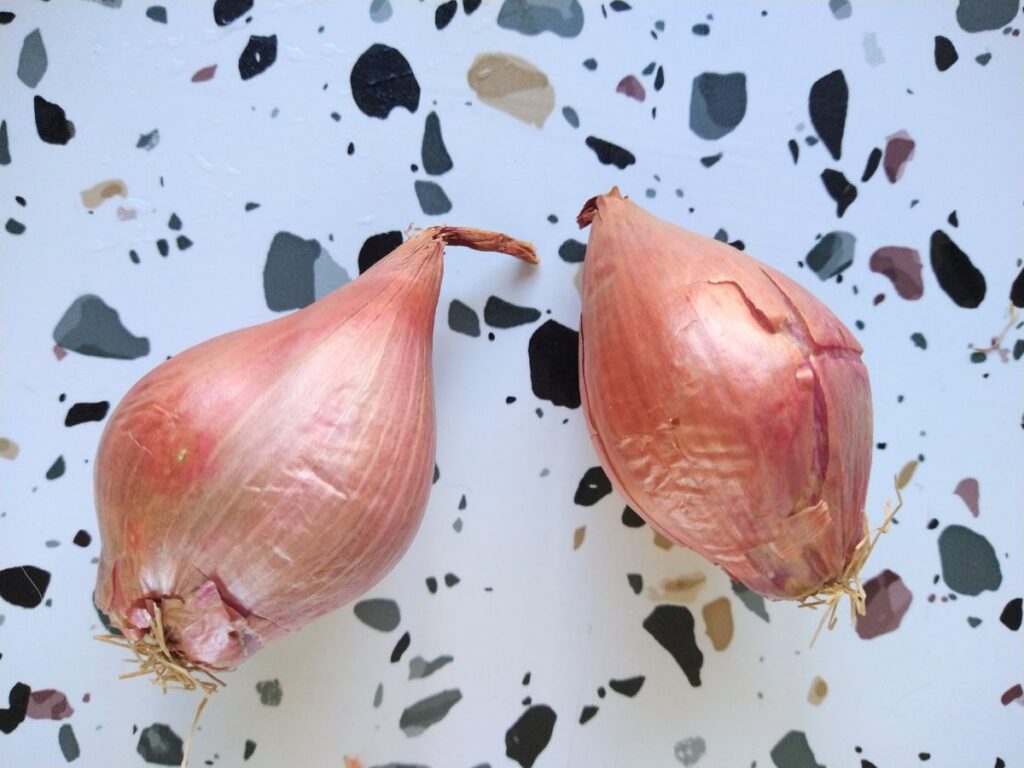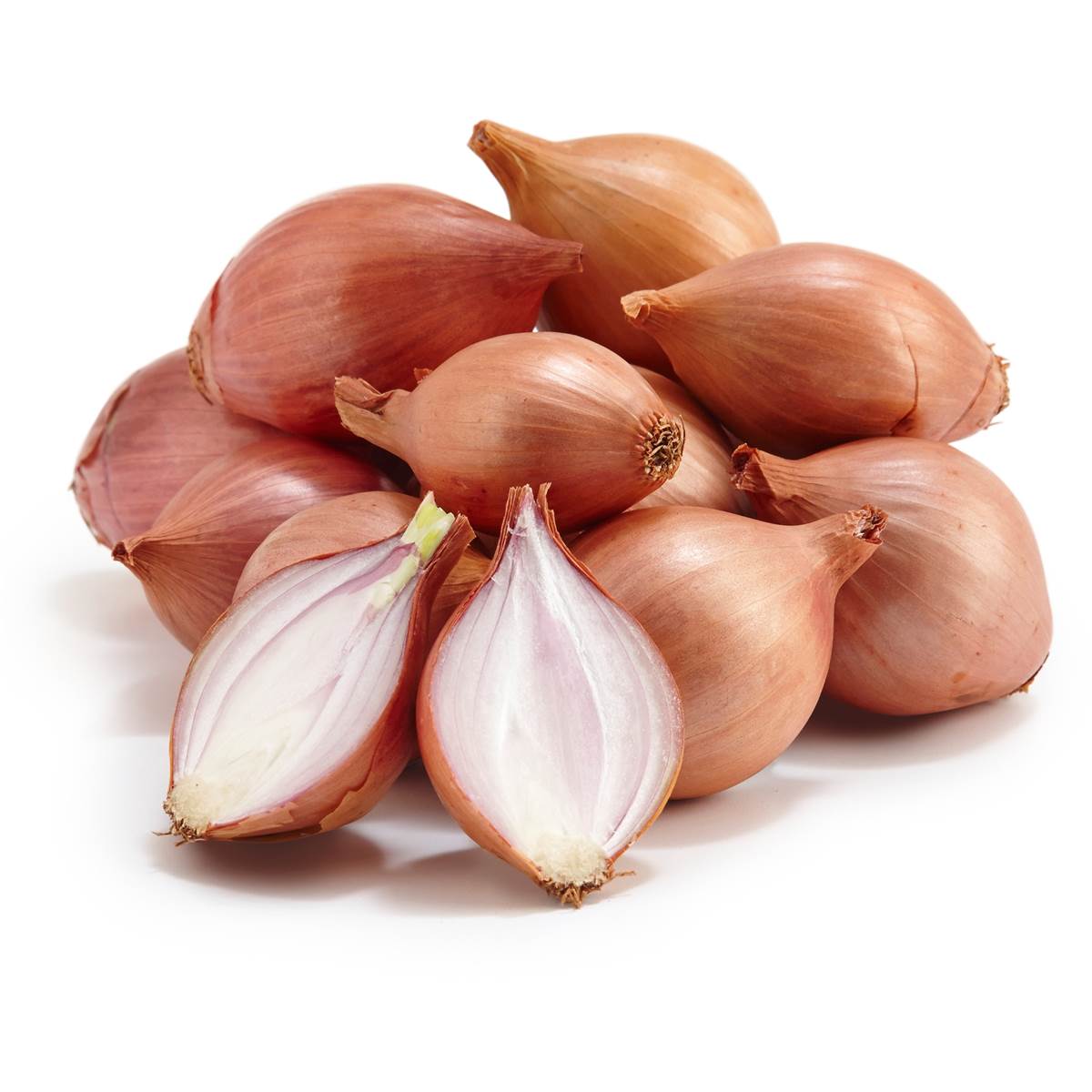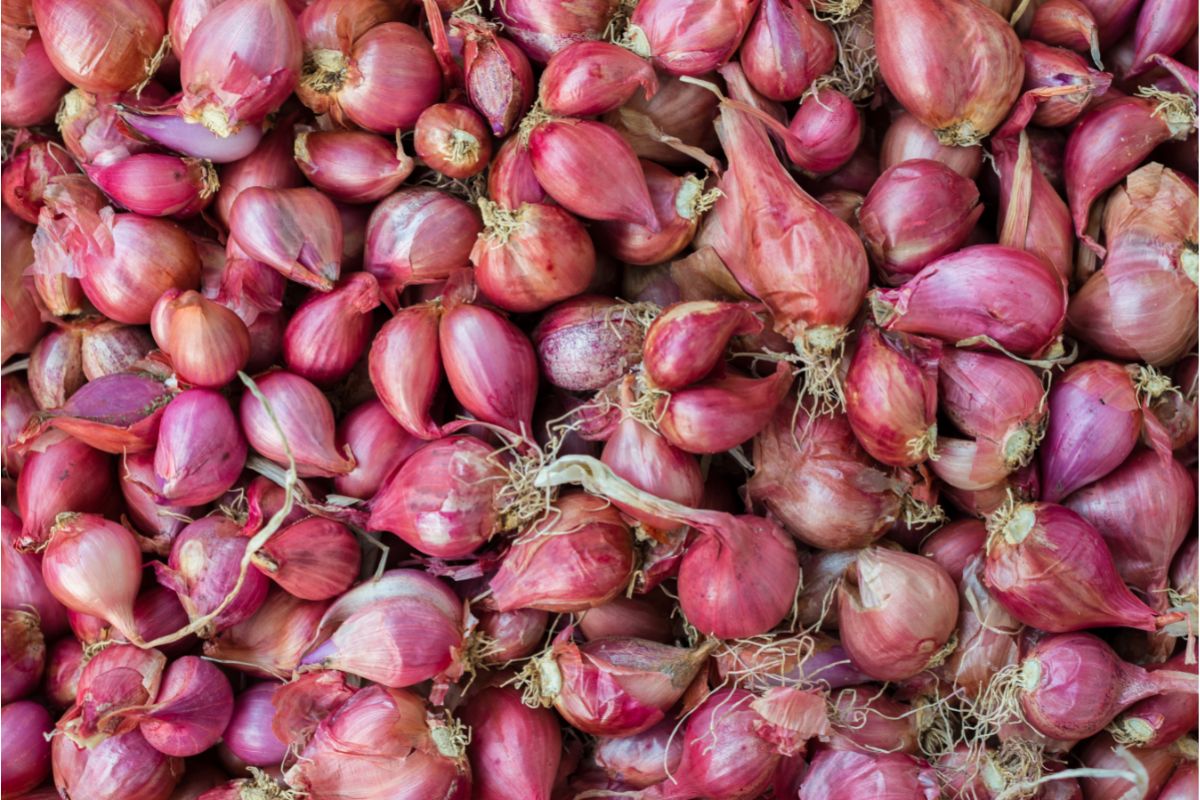
How to Tell If a Shallot is Bad Eat Like No One Else
Quick Answer. Like all fruits and vegetables, shallots will eventually go bad. When stored at room temperature, shallots can last for about a month, as long as the environment is relatively dry and cool. Storing shallots in the refrigerator can help keep them looking fresh for up to 2 months unless they are peeled or diced.

What if SHALLOT Was CANON? YouTube
Shallots' shelf life is about 1 month in a cool and dry place. They can last for more than 3 months if you refrigerate them. However cut shallots, last for about a week if you seal them in a bag and place them in the fridge. Shallots placed in the fridge can last for up to 6 months, or even longer. To know more clearly about how long are.

Shallot Picking How And When To Harvest Shallots
7 to 10 days. Up to 15-20 days. Storing your Shallots in damp places or high temperatures can make them rot faster. You should avoid storing Shallots in the same tray with other vegetables. Shallots can ruin other vegetables if kept together.

What are Shallots? Jessica Gavin
Once you've stored your shallots correctly, you can expect them to last for at least 2-3 months. After that, they may start to sprout and become less flavorful, but they'll still be safe to eat. So if you find yourself with a bunch of shallots that you're not quite sure what to do with, don't worry. They'll keep until you're ready.

How to Tell If a Shallot is Bad Eat Like No One Else
How to tell if shallots are bad. When fresh, shallots should be firm and not have any soft spots. If you notice any mushy spots on the shallot or notice the shallot feels extremely light, it may signify that the shallot has started to dry out and spoil. If the shallot has started to sprout, this is also a sign of spoilage.

Shallots Western Veg Pro, Inc. Fruit & Vegetable Growers & Shippers
Yes, shallots do go bad eventually. They can last anywhere from 2-4 weeks at room temperature. Keeping them in a dry, cool location like a pantry is a great place to store them. To help keep them lasting even longer you can keep shallots for up to 3-6 months stored in the fridge.

What Do Shallots Taste Like? Do Shallots Taste Good? Eat Delights
Shallots can last for up to a month in a cool, dry pantry, and over three months when refrigerated. Cut or diced shallots should be stored in a sealed bag in the fridge and can last for about a week. Signs that shallots have gone bad include softness, oozing liquid, mold, and a funny smell.

How Long Do Shallots Last? Shelf Life & Storage Tips
Freezing shallots can be a convenient way to preserve them for an extended period. Just make sure to seal them well to prevent freezer burn. Frozen shallots can last for about 3 to 6 months if stored properly. So, go ahead and stock up on shallots when they're in season! Shallots Storage Tips. To summarize, here are a few storage tips for shallots:

How to Cook Fried Shallot MyKitchen101en YouTube
It is important to know how to tell when shallots go bad. The first sign that a shallot is bad, or spoiled, is if it has an off-smell. A strong, unpleasant odor can be caused by rots in the bag where the shallots have been stored, which can lead to mildew or even botulism. Other bad signs of a shallot include mold and turning dark yellow, or.

Shallot is trying to tell us something YouTube
Chopped Shallots. As with almost any fresh vegetables, you cannot expect chopped pieces to last for more than a couple of hours if left on the counter. Place chopped shallots in an airtight container in the fridge or freezer. They will last up to 4 days in the fridge, and up to 6 months in the freezer.

Shallots Archives CSA365
How to Tell If Shallots Are Bad. Identifying spoiled shallots is crucial to ensure the quality and safety of your dishes. By recognizing the signs of shallot spoilage, you can avoid using contaminated ingredients and maintain the freshness of your meals. Here are some indicators that your shallots may have gone bad:

Shallot Picking How And When To Harvest Shallots Gardening Know How
Bury in the garden: Another option is to bury the spoiled shallots in your garden. Dig a hole in an area away from your edible plants and bury the shallots. Over time, they will decompose and provide nutrients to the soil. This method is particularly useful if you have a large amount of spoiled shallots to dispose of.

Growing Shallots in the Southern Plains FineGardening
Don't Let Them Go Bad! Yes, shallots can go bad. As with all produce, it is important to know how to store and identify when it has spoiled. Shallots are a type of onion with a milder and sweeter taste, making them a versatile ingredient in various dishes. However, if not stored properly, they can become mushy, moldy, or sprouted.

Can you freeze shallots? How to do this? FOODANDKITCHENAPPLIANCES
Bad shallots will have a mushy, soft, gooey inside and may even secrete liquids. If they have reached this stage, absolutely do not eat them. Eating spoiled shallots can cause some serious issues with your intestinal system. Shallots that have reached this stage most likely have an overabundance of bacteria growth.

Shallot harvesting and storing YouTube
First off, let's explore how long they should last. Shallots when stored properly (more on that in a moment) should last anywhere from 1 to 3 months. The trouble is it's hard to know how long the shallots spend at the grocery store or how long it's been since they have been harvested.

What if Shallot had his own Canon?! YouTube
Soft, squishy, or oozing liquid: Shallots that feel soft, mushy, or have liquid seeping from them are no longer fresh. This indicates water loss and spoilage, making them unsuitable for consumption. Rotten, moldy, or darkened areas: Any signs of rot, mold, or darkened spots on the shallot's skin are clear indicators of spoilage. It's best to discard shallots with such blemishes.